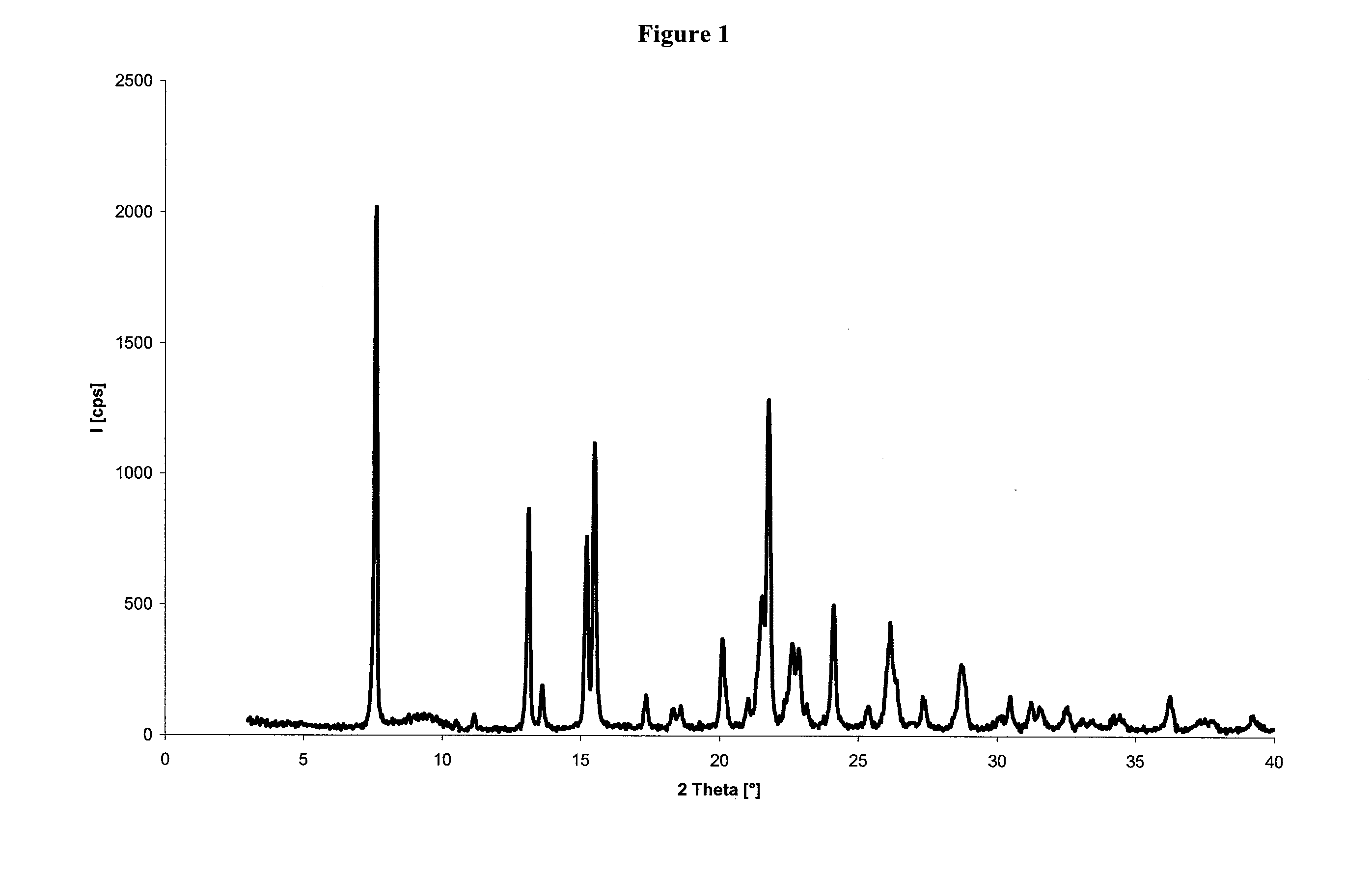Process for the preparation of crystalline dexlansoprazole
a technology process, which is applied in the field of process can solve the problems of low industrial application of known processes for the preparation of crystalline anhydrous dexlansoprazol
- Summary
- Abstract
- Description
- Claims
- Application Information
AI Technical Summary
Problems solved by technology
Method used
Image
Examples
example 1
Preparation of Crystalline Anhydrous Dexlansoprazole Starting from Amorphous Dexlansoprazole
[0024]20.0 g of amorphous dexlansoprazole are dispersed in 80 ml of isopropanol and the dispersion is heated at about 35° C. The solid at the beginning dissolves and then starts to precipitate again. The dispersion is slowly cooled (0.2° C. / min) till to about 20° C., and then 100 ml of hexane are dropped therein in about 45 min. The dispersion is again slowly cooled till to 0° C. and the solid is recovered by filtration. The solid is washed on the filter with isopropanol and hexane.
[0025]The obtained product has a XRPD spectrum, as reported in FIG. 1.
[0026]H1-NMR (in DMSO): d (1H), 8.27 ppm; m (2H), 7.6 ppm; dd (2H), 7.27-7.30 ppm; d (1H), 7.07 ppm; q (2H), 4.84-4.92 ppm; q (2H), 4.72-4.84 ppm; s (3H). 2.16 ppm.
example 2
Preparation of Crystalline Anhydrous Dexlansoprazole Starting from Dexlansoprazole Sesquihydrate
[0027]50.1 g of dexlansoprazole sesquihydrate are dispersed in 200 ml of 2-butanole and the dispersion is heated at 35° C. till the dissolution is complete. The solution is cooled to 20° C. at a cooling rate of 0.3° C. / min, and then seeded with crystalline anhydrous dexlansoprazole. 400 ml of heptane are slowly dropped therein, and the solution slowly cooled to 0° C. and the solid recovered by filtration.
[0028]m.p. 148-150° C.
[0029]The obtained product has a XRPD spectrum, as reported in FIG. 1 and a H1-NMR spectrum as reported in Example 1.
example 3
Preparation of Crystalline Anhydrous Dexlansoprazole Starting from Amorphous Dexlansoprazole
[0030]139 g of amorphous dexlansoprazole are dissolved in 1390 ml of isopropanol and 10 ml of water at a temperature of 25° C. About 1000 ml of solvent are distilled off and the solution is cooled to room temperature. Then 1000 ml of heptane are slowly dropped therein. The solution is slowly cooled to 0° C. and the solid is recovered by filtration.
[0031]m.p. 148-150° C.
[0032]The obtained product has a XRPD spectrum, as reported in FIG. 1 and a H1-NMR spectrum as reported in Example 1.
Esempio 4
Preparation of Crystalline Anhydrous Dexlansoprazole Starting from Dexlansoprazole (KF 3,5%)
[0033]10 g of dexlansoprazole are dissolved in 20 ml of ethanol at the temperature of 25° C. 60 ml of heptane are slowly dropped therein and then the solution is slowly cooled to 0° C. and the solid is recovered by filtration.
[0034]The product has a XRPD spectrum, as reported in FIG. 1 and a H1-NMR spectrum as rep...
PUM
 Login to View More
Login to View More Abstract
Description
Claims
Application Information
 Login to View More
Login to View More - R&D
- Intellectual Property
- Life Sciences
- Materials
- Tech Scout
- Unparalleled Data Quality
- Higher Quality Content
- 60% Fewer Hallucinations
Browse by: Latest US Patents, China's latest patents, Technical Efficacy Thesaurus, Application Domain, Technology Topic, Popular Technical Reports.
© 2025 PatSnap. All rights reserved.Legal|Privacy policy|Modern Slavery Act Transparency Statement|Sitemap|About US| Contact US: help@patsnap.com

